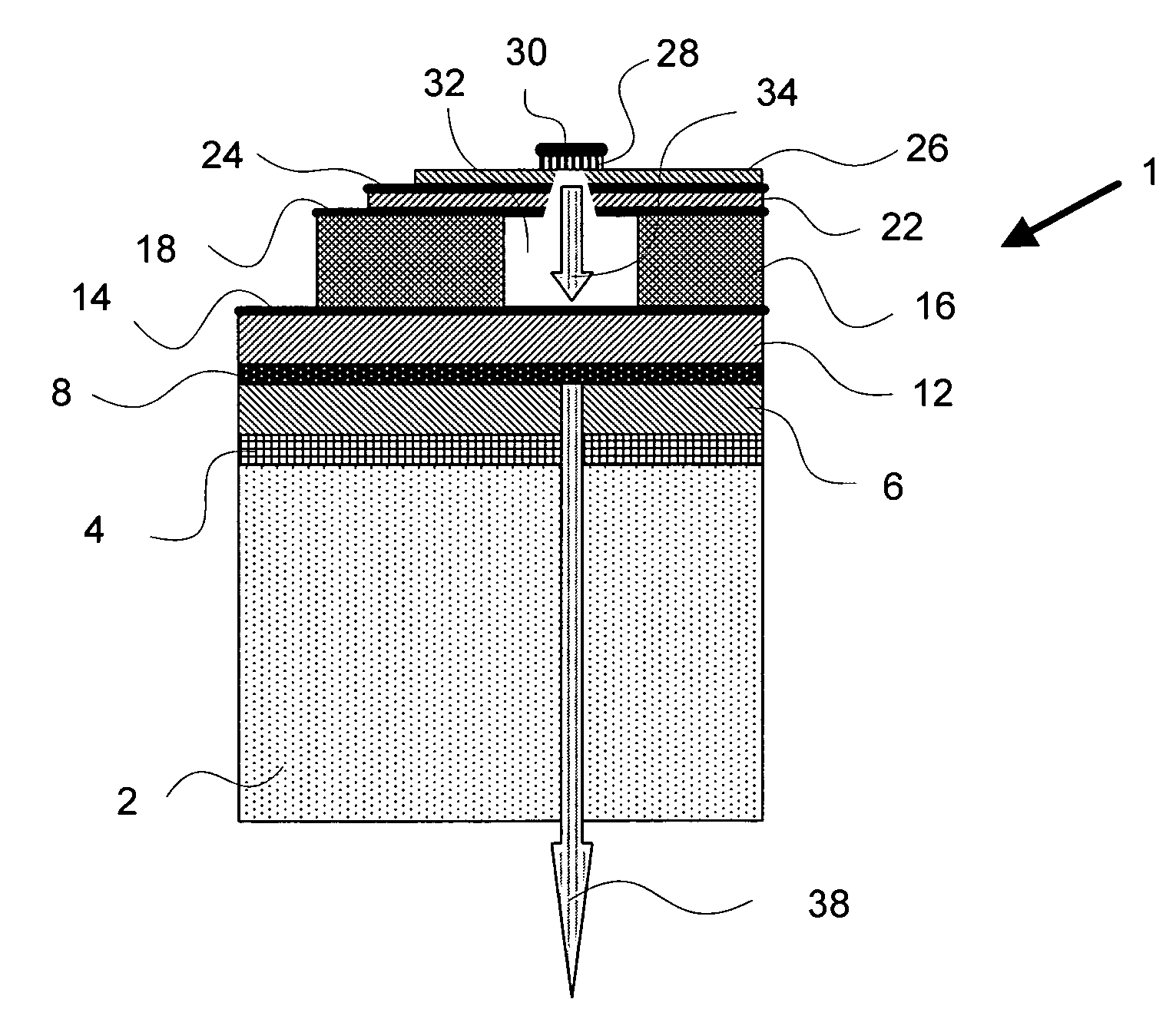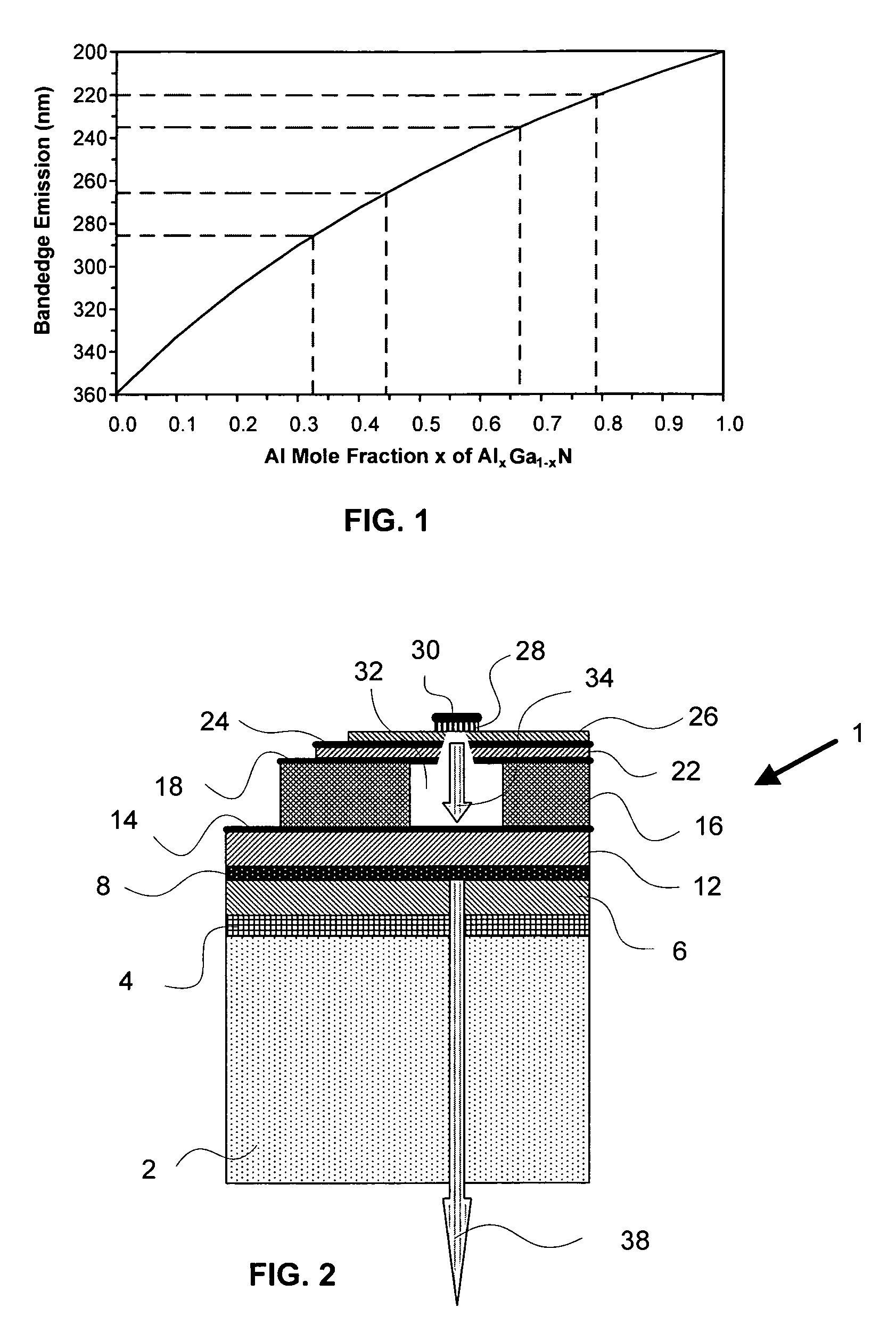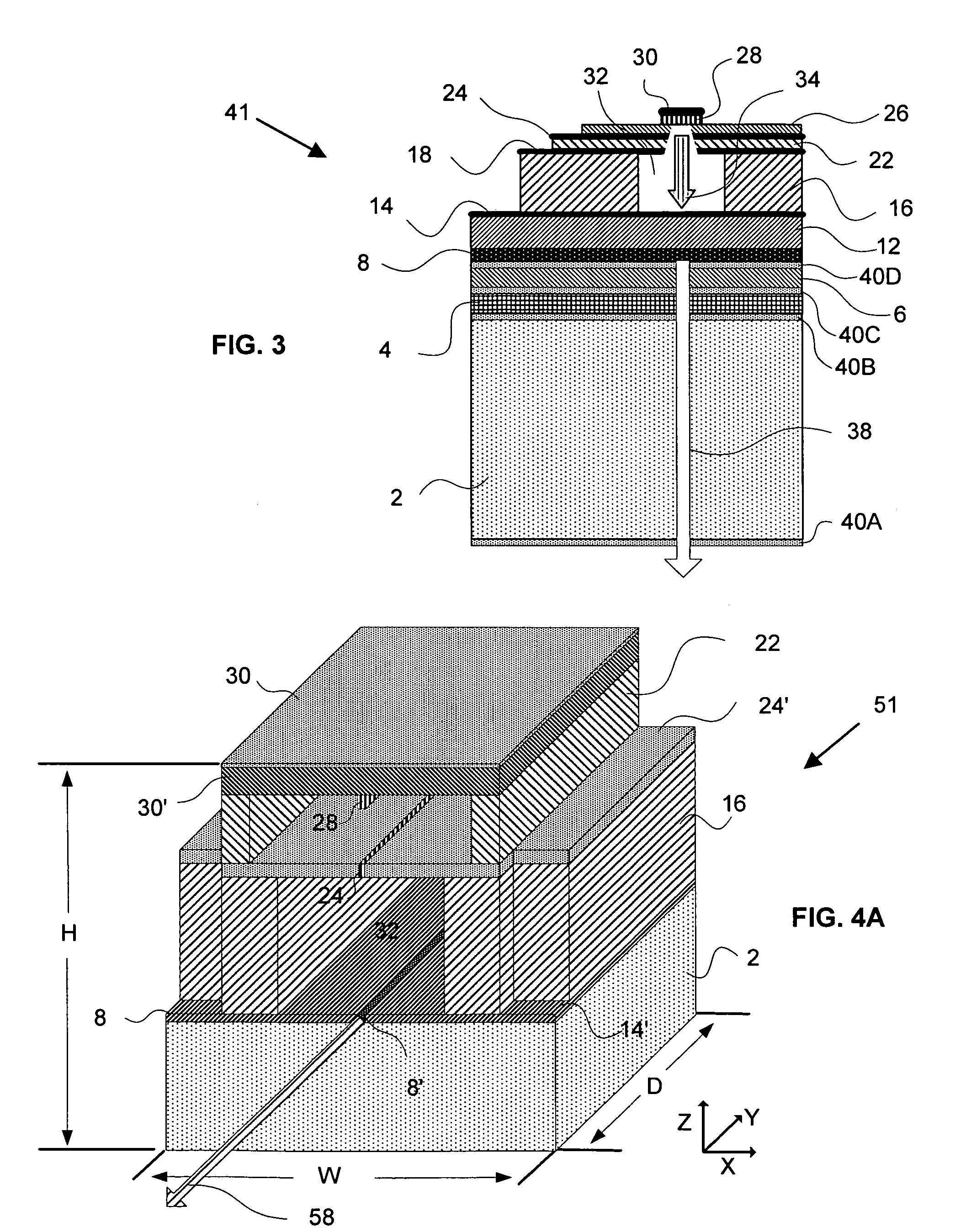Electron beam pumped semiconductor laser
a technology of semiconductor lasers and electron beams, applied in the direction of optical radiation measurement, instruments, spectrometry/spectrophotometry/monochromators, etc., can solve the problems of difficult to ensure stoichiometrical reactions, inconvenient operation, and large majority of chemicals that do not absorb strongly, so as to reduce weight
- Summary
- Abstract
- Description
- Claims
- Application Information
AI Technical Summary
Benefits of technology
Problems solved by technology
Method used
Image
Examples
Embodiment Construction
Deep UV Radiation Production Methods and Sources
[0122]To avoid the difficulties, set forth above, related to producing deep UV semiconductor sources, Applicants have developed a pumping approach that uses ballistic electron beam injection directly into the active region of a wide band gap semiconductor material. One element that distinguishes some embodiments of the invention from the teachings about electron beam pumping noted above is that none of the publications discuss, describe, or suggest the use of wide bandgap semiconductor materials (i.e. semiconductor materials having a band gap greater than 3.5 eV, corresponding to wavelengths less than 400 nm, more preferably greater than 4.15 eV, corresponding to wavelengths less than 300 nm, and most preferably greater than 4.97 eV, corresponding to wavelengths less than 250 nm). Furthermore these references fail to teach the use of a Group III nitride semiconductor material systems, such as an AlGaN alloy, for producing laser output ...
PUM
 Login to View More
Login to View More Abstract
Description
Claims
Application Information
 Login to View More
Login to View More - R&D
- Intellectual Property
- Life Sciences
- Materials
- Tech Scout
- Unparalleled Data Quality
- Higher Quality Content
- 60% Fewer Hallucinations
Browse by: Latest US Patents, China's latest patents, Technical Efficacy Thesaurus, Application Domain, Technology Topic, Popular Technical Reports.
© 2025 PatSnap. All rights reserved.Legal|Privacy policy|Modern Slavery Act Transparency Statement|Sitemap|About US| Contact US: help@patsnap.com



